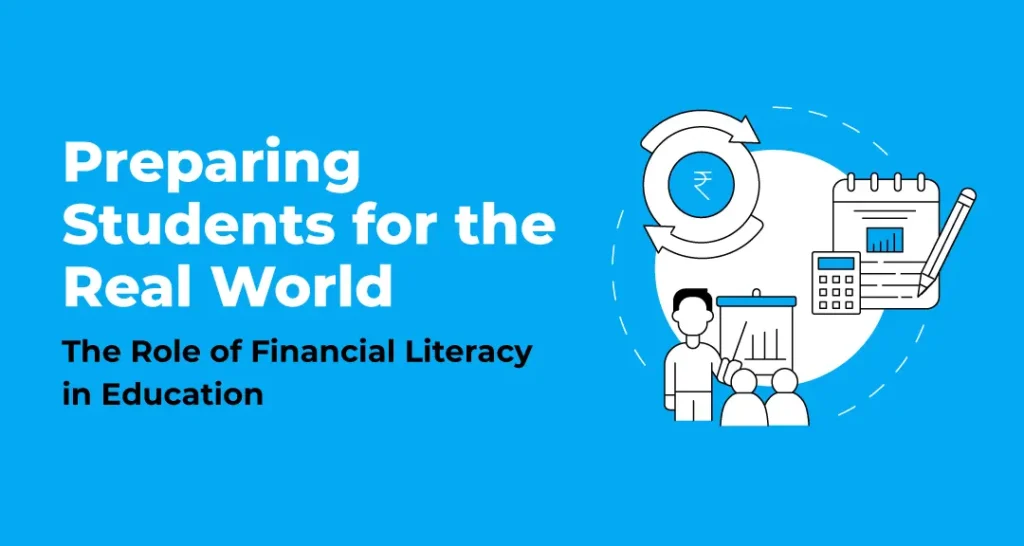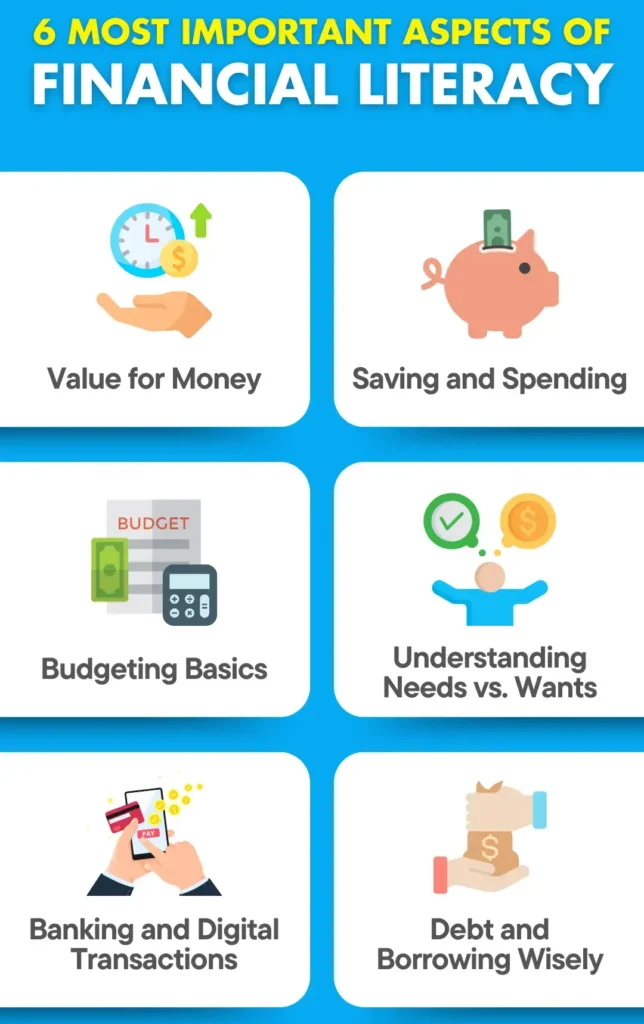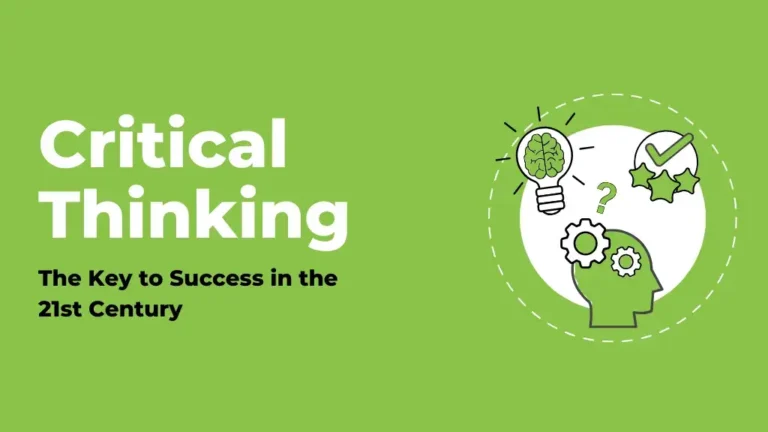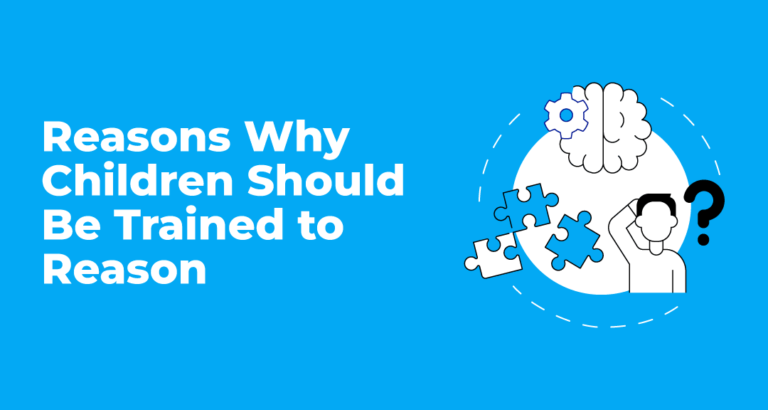Preparing Students for the Real World: The Role of Financial Literacy in Education
- Teaching
- March 1, 2025
- VOLT Learning

Money doesn’t grow on trees. We have all heard this phrase at some point in life and eventually passed it on to our children, but how often do we teach children what it actually means?
Financial Literacy is a fundamental life skill that helps children make smart financial decisions early on and build a secure future. The earlier they learn this habit, the better prepared they’ll be to navigate the real world. Teachers and parents play crucial roles in teaching students about money management and empowering them to make informed decisions, avoid financial pitfalls, and prepare for a stable future.
What is Financial Literacy and Why is It Critical for Students?
Financial Literacy is understanding and managing money effectively through various financial actions, such as budgeting, saving, spending wisely, taxation, crediting, debiting and investing. When introduced to children early, financial Literacy equips them with the cognitive intelligence to make informed financial decisions and handle their money wisely.
Financial Literacy for kids is essential as it equips them with the skills needed to handle real-world financial responsibilities, such as budgeting for daily expenses, managing pocket money, and making early investment decisions, which make them confident towards preventing poor financial management mistakes in adulthood.
Money affects nearly every aspect of life—how we live, what we buy, and even our choices for our future careers. Students with a better understanding of financial literacy cultivate a sense of confidence and a mindset of saving that help them in informed decision-making while minimizing their reliance on others for financial support.
6 Important Aspects of Financial Literacy
Students need comprehensive financial training because it trains them to understand core money principles that lead them through actual financial encounters. As a teacher, you can help students learn how to manage their funds responsibly by introducing them to the following essential concepts:

- Value for money: The Children’s Financial Literacy journey must begin with fundamental explanations about money and its role in the Indian economy and learning about different currencies. Allowing them to absorb these fundamental concepts and introducing the idea of value for money and its role in everyday choices and financial management will help them better grasp the concepts.
- Saving and spending: Teach students the value of saving for emergencies, big purchases, and future goals, rather than spending impulsively. Use real-life examples to show why saving is a smart habit.
- Budgeting Basics: Introduce students to budgeting by helping them track their income and expenses. Show them how to allocate money for necessities while leaving room for fun and savings.
- Needs vs. Wants: Encourage students to distinguish between essential expenses (food, school supplies and basic clothing) and luxury items (video games, designer clothes and gadgets). This will help them make informed spending choices.
- Banking and Digital Transactions: Explain how bank accounts, online payments, digital wallets, and interest work. With the rise of digital banking, it’s essential for students to learn safe and responsible financial practices.
- Debt and borrowing wisely: Teach students about the risks of borrowing money, the impact of credit card debt, and the importance of repaying loans responsibly. Help them understand when borrowing is necessary and when it should be avoided.
Is It Essential to Teach Financial Literacy to Kids at a Young Age?
When Financial Literacy is taught effectively inside the classrooms, it goes beyond theory and equips the students at an early stage with practical money management capabilities. It helps them apply financial concepts in real-life situations, make informed decisions, and build a solid foundation for future financial independence. A well-rounded approach ensures they are prepared for real-world financial responsibilities.
Here are some practical activities for teaching Financial Literacy to the students:
1. The Budgeting Challenge:
To better understand what Financial Literacy for Kids means, you can engage your students in a 15-minute challenge wherein they have to set a budget and plan a small event. Allocate them dummy classroom currency, budgeting worksheets and a list of event-related expenses (e.g., decorations, food, entertainment, seating, invitations) with prices.
Start the session by having an interactive discussion on what budgeting is and why it’s crucial. You can explain to students the essential budgeting concepts, like income, expenses, savings, borrowing, needs, and wants, with simple examples.
Now ask the students to divide into small groups of maybe 3, and you can assign each team an event to plan (for example, a birthday party with ₹1,000 or a school picnic with ₹2,000). Give them a worksheet covering possible expenses and their expected costs categorized as need (essential expenses) and want (optional expenses).
Now, give students 15 minutes to brainstorm together and let them decide how much to spend on each item. Let them allocate their money wisely. Ask them to include concepts like saving, borrowing, wants, needs and spending. Now, ask each group individually to present their budgeting plan, see their spending choices, and how they budgeted their expenses and wants.
Wrap up this activity by discussing which team performed well by staying within budget, whose choices were the best regarding saving and investments, and what challenges they faced.
If you are struggling with the execution plan for such activities, get help from the VOLT Mathematics book, which provides situation-based classroom activities for teachers like you.
2. The Classroom Supermarket Challenge – Coupon and Discount Game:
You can plan an interactive activity wherein students are involved with mock coupons and price lists. The objective of this activity will be to equip students with the basic concept of how coupons and discounts work in real-life shopping scenarios. You can make this an engaging role-play activity by adding fake currency (classroom money), shopping baskets, small paper bags, and discount coupons.
Set up a mini supermarket by arranging all the desks with various “dummy products” labeled with dummy prices. Now, provide each group of students with a fixed amount of classroom money and discount coupons. Allot a shopping time of 5 minutes wherein kids will be involved in shopping for items by deciding how to use their coupons to maximize savings. Ask them to calculate the total cost of items after discounts and determine the best deals.
After the activity, you can help students understand how discounted coupons help them save money.
3. The Entrepreneurship Game:
You can start the class by introducing kids to the basics of entrepreneurship and concepts such as expenses, investments, risks, profits, and budgeting. Also, share real-world examples of young entrepreneurs, then engage them in a role-playing game wherein they have to think about a set-up plan for a mini business.
Divide students inside the classroom into small groups of maybe three students. Ask each team to brainstorm together and come up with a simple business idea (e.g., a lemonade stand, handmade greeting cards, selling bookmarks, or a toy rental service). Engage the students in business planning by making them fill a simple worksheet with details covering name of business setup, product/service, what cost of making each item and selling price (here you can guide them) and let them calculate expected profit.
Ask them to set up a shop by arranging their desks as stalls for a “Classroom Business Fair”, wherein each team has to decorate their shops and prepare a slight pitch to sell their products. Ensure half the students in the class act as business persons or shopkeepers, and the other half are customers with classroom money to spend. After some time, they switch roles.
Conclusion: Empowering Financial Literacy for Kids With VOLT Maths Book
Financial literacy is a lifelong skill that shapes a child’s ability to make informed financial decisions. Teaching students financial concepts early helps them develop smart money habits, responsible spending, and strong decision-making skills, setting them up for a financially stable future. Just as reading and writing are fundamental to education, understanding financial management is equally crucial today.
The VOLT Mathematics Book plays a key role in building financial literacy for kids by introducing essential concepts like budgeting, saving, and smart spending in a fun, engaging manner. Through interactive exercises, real-life examples, and problem-solving activities, VOLT Maths helps children grasp financial concepts in a way that is easy to understand and apply in their daily lives.
Let’s equip our students with the necessary financial knowledge—starting today!
>> Please Share



